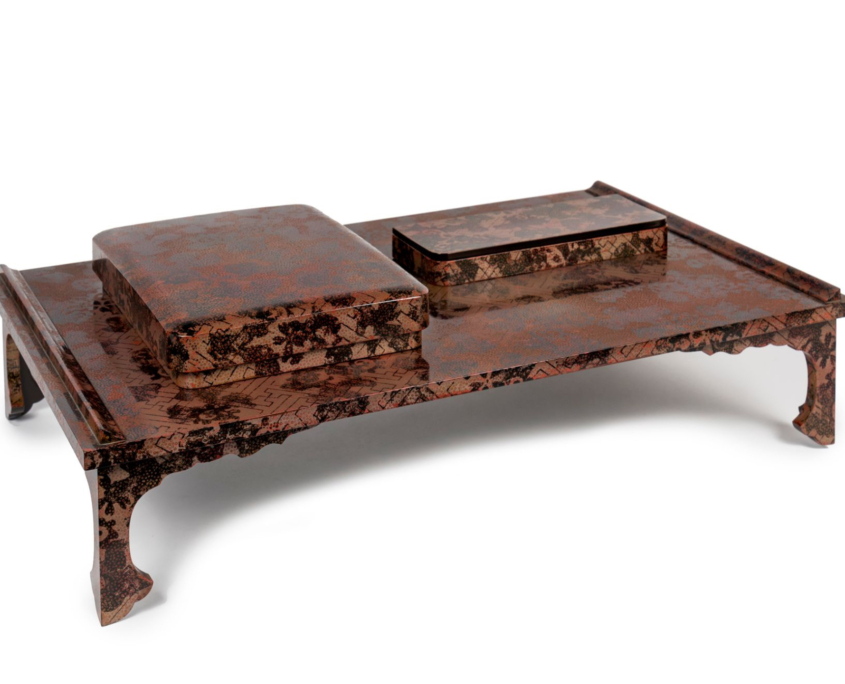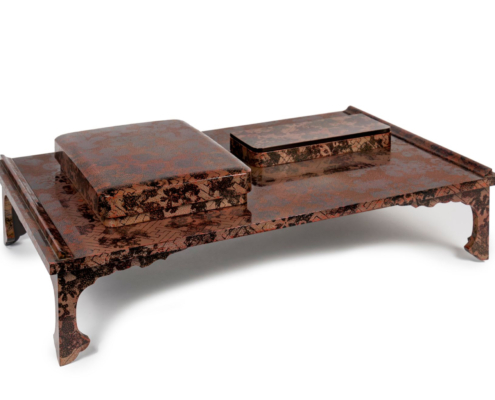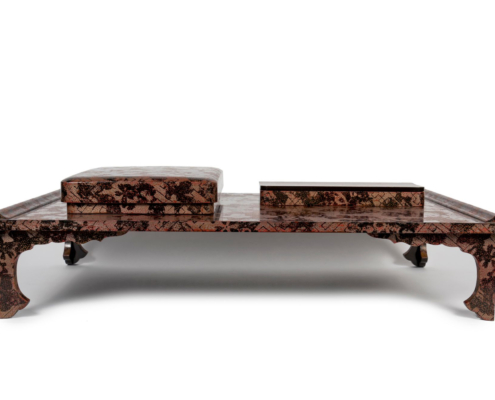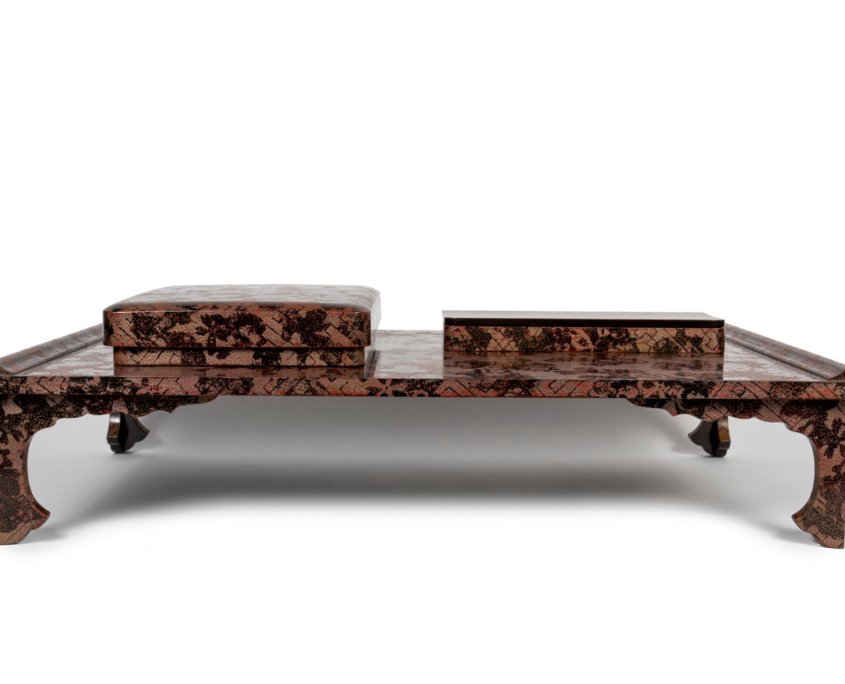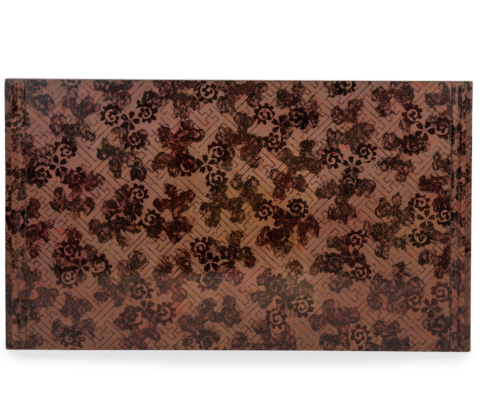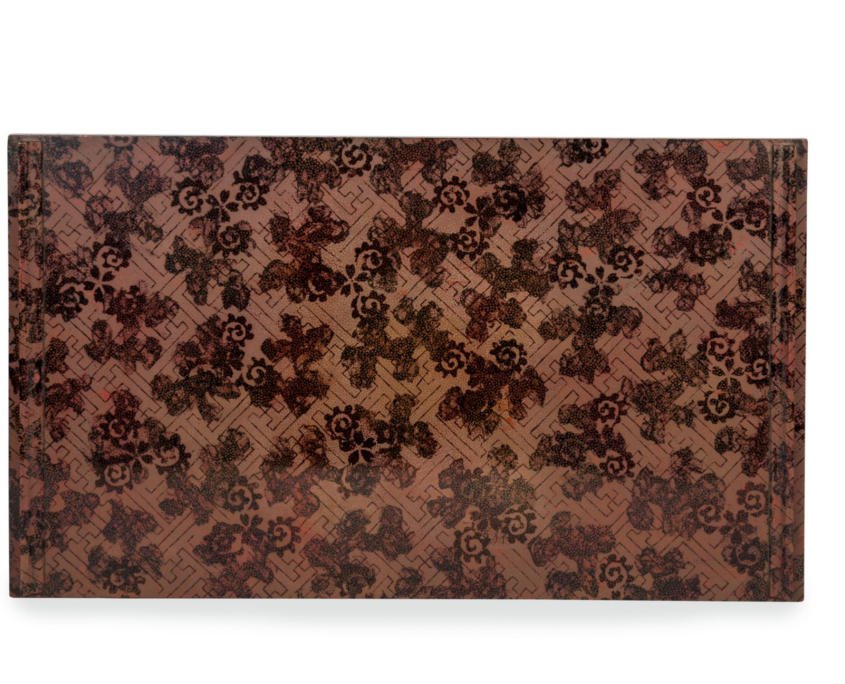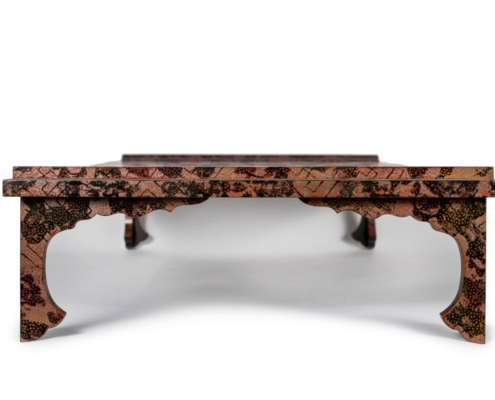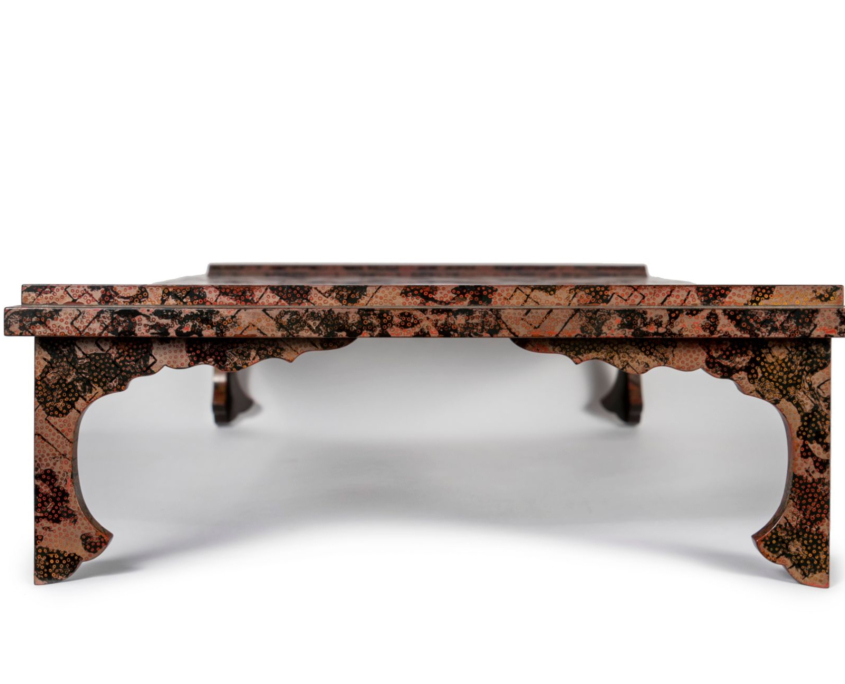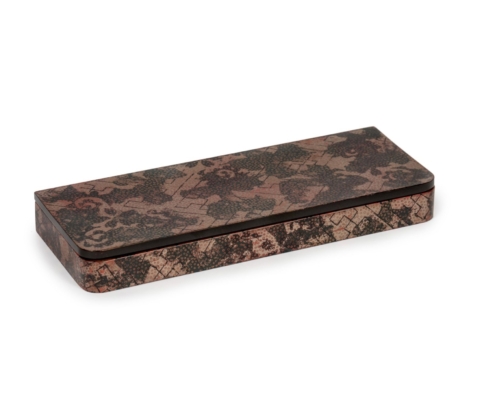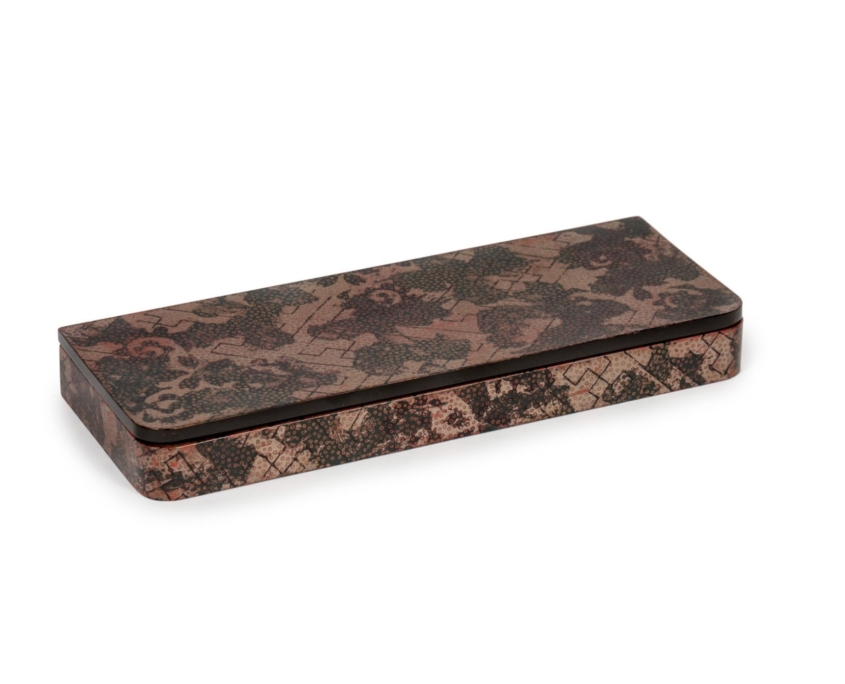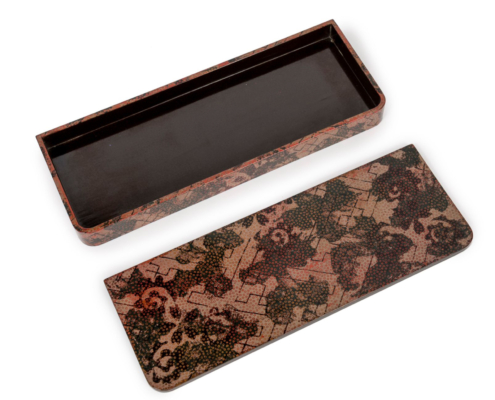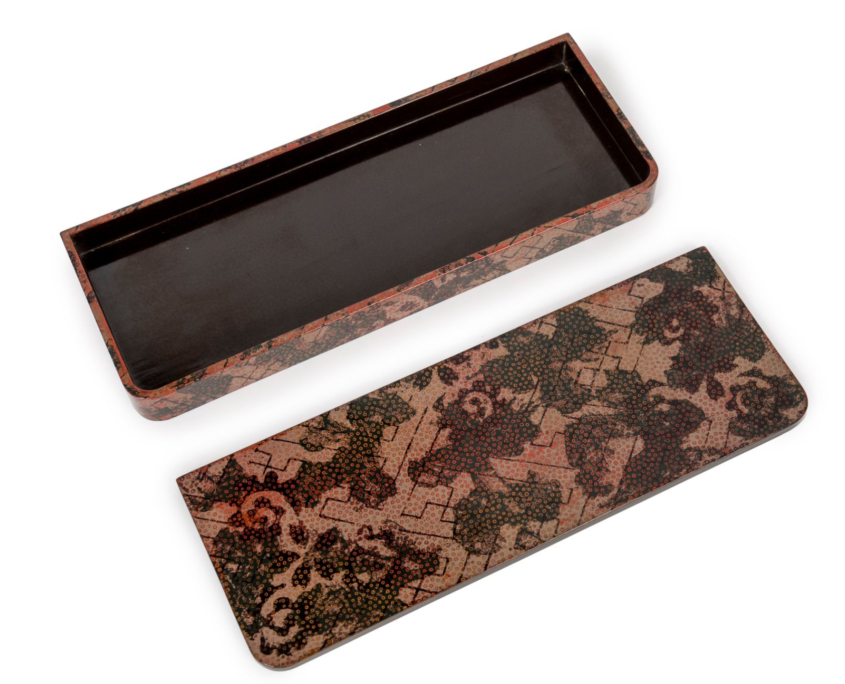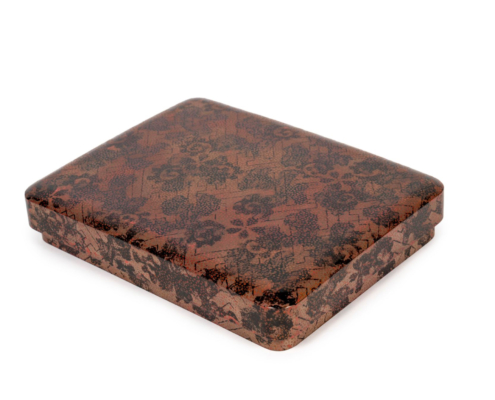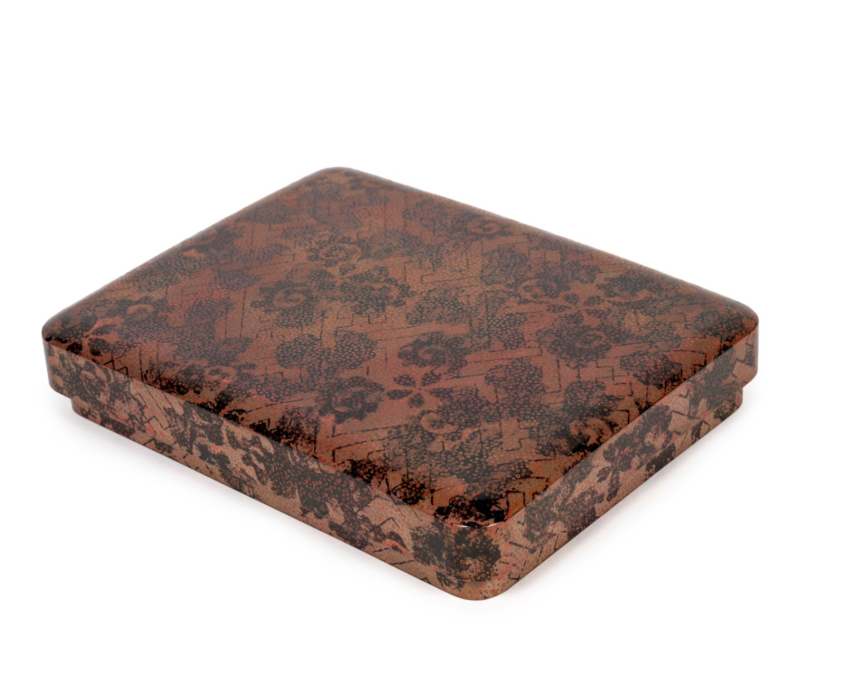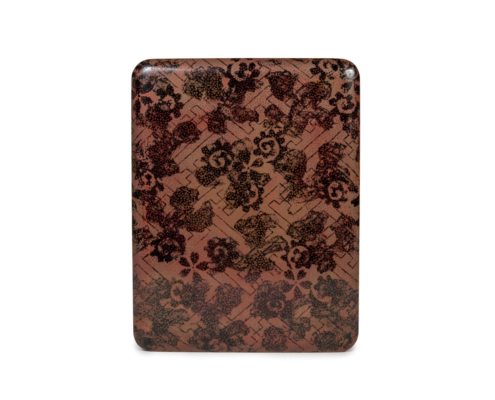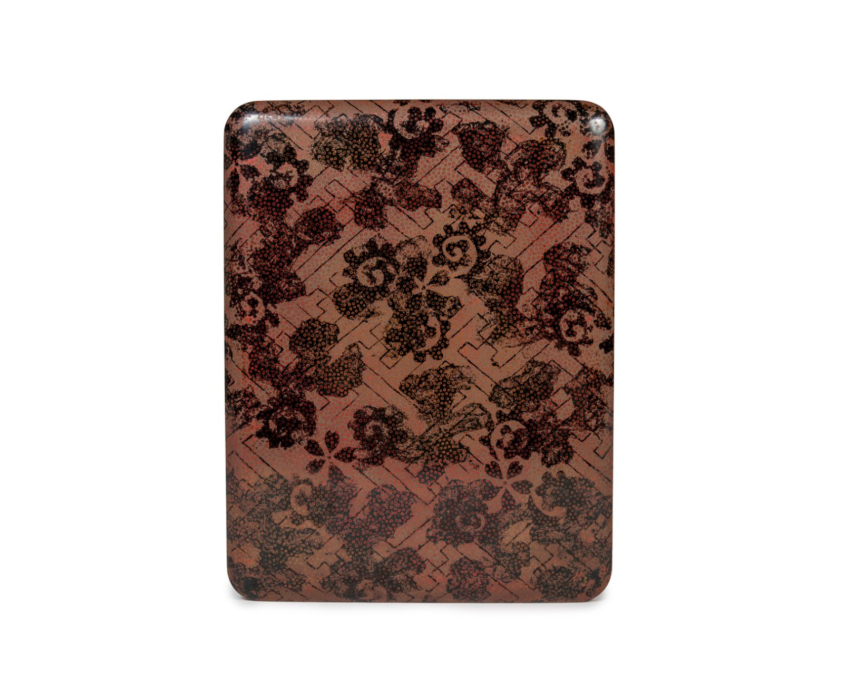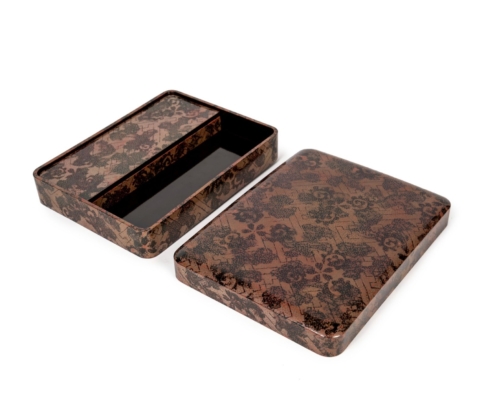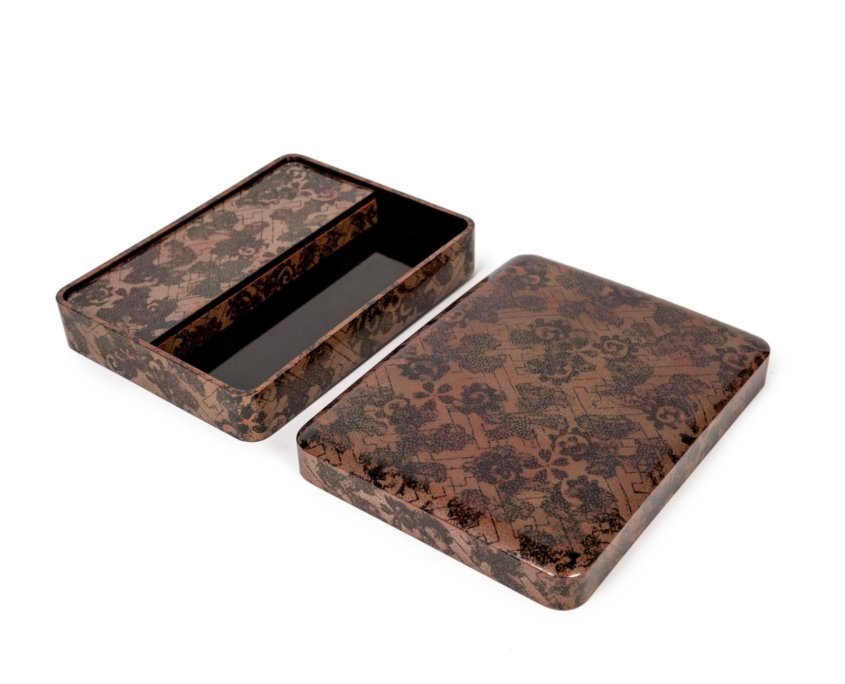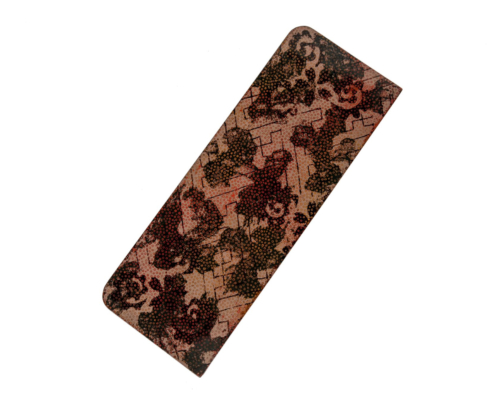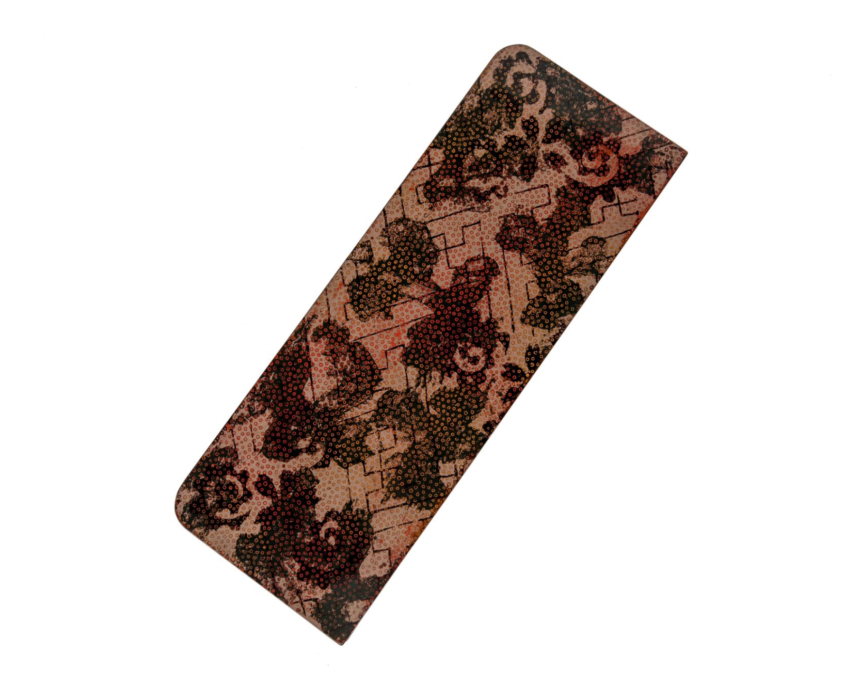SET BUNDAÏ RYOSHIBAKO FUDEBAKO – TAISHO
Référence : 2020-806
Set of bundai, ryōshibako and fudebako in wakasa lacquer with an old rose background and black traditional Japanese patterns.
The saya pattern (or sayagata) is composed by Chinese svastikas. This symbol linked to Buddhism, mean intelligence, power and peace. It is a good omen sign.
The kanoko pattern reminds stains on fawn back.
The sakura (cherry blossom) pattern is emblematic of Japan. The blossoming in a short time marks spring beginning and is a symbol of renewal and ephemeral beauty.
There are also traces of calligraphy brush, in reference to the function of the objects.
Bundai is a low table used to put books or scrolls and, later, to write.
Rectangular ryōshibako (letter and document box) with a slightly domed
Fudebako (pencil case) of rectangular format very narrow in its length with two rounded corners, flat cover.
Wakasa lacquerware (wakasa-nuri in Japanese) is a specialty of the Wakasa region in Fukui Prefecture, west of Lake Biwa on the Sea of Japan, produced from the early Edo period (1603-1868). This technique derives from togidashi maki-e and is characterized by the creation of patterns in eggshells, seashells or pine needles.
More specifically, the decoration is obtained by rubbing on superimposed layers of lacquer of different colors. This technique was not known in the West before Japan opened up to international trade.
Japan, Taisho era (1912-1926)
Dimensions :
Bundai : Height 12.4 cm (4.88 inch) – Length 58.2 (22.91 inch) – Width 34.5 cm (13.58 inch)
Ryoshibako : Height 4.6 cm (1.8 inch) – Length 24 cm (9,45 inch) – Width 18.6 cm (7.32 inch)
Fudebako : Height 2.7 cm (1.06 inch) – Length 22.2 cm (8.74) – Width 8.2 cm (3.22 inch)




